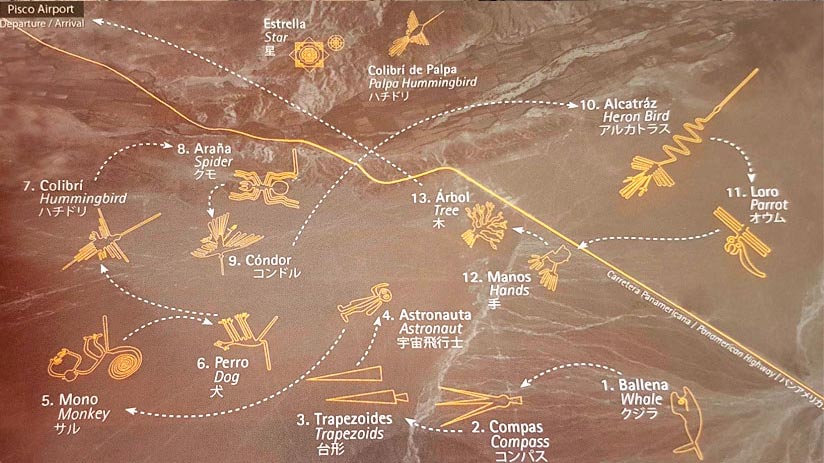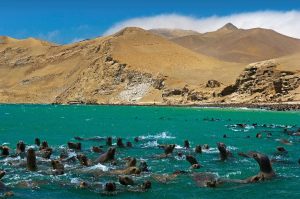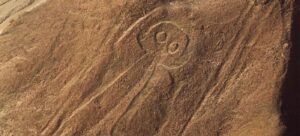One of the most famous landmarks in all of Peru, the ancient Nazca Lines have become a must-visit on any trip here.
However, given they’re located in the desert (and are pretty big in size), many often wonder what is the best way to take the most memorable Nazca Lines photos, as well as which we should most keep an eye out for.
In this guide we’ll explore the most iconic Nazca Lines photos that we can see from above, and also whether they’re still visible today. We’ll also cover the very best ways for you to explore these ancient desert drawings too when in Peru.
Table of Contents
The Different Nazca Lines Images That You Can See From Above
Overall there are more than 300 hieroglyphs which were believed to have been created by the ancient Nazca civilisation. They are all conveniently located in an area of 50km2, meaning that all can be seen with relative ease when flying from above.
Below we’ll now explore some of the most important Nazca Lines images, and how to recognise them when in the desert.
The Condor
Firstly we begin with arguably the most famous and important design. The Condor is one of the most important animals to be documented throughout Peru’s deep history, and is often cherished for its strength and sheer size (it is the largest bird on the planet after all).
As a result it is one of the overall largest designs, making for a very memorable Nazca Lines photo that we can take from above (measuring a total 130m in length as well as 115m in width). All Nazca overflight tours from above will take their time flying over this particular design so you can properly observe it.
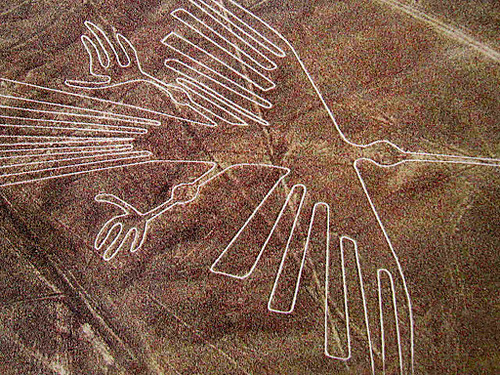
The Astronaut
Now we move onto the Astronaut, which remains the only design whose origins are completely unknown (nor why it was even created in the first place). Whilst all other designs on this list are marked as important symbols throughout the Nazca culture, this one has zero evident traces.
Theories suggest that it may be a more creative way of depicting humans, whilst others say that they may have had ancient beliefs about other possible life forms. Whatever its original purpose, it still makes for an incredible photo opportunity!
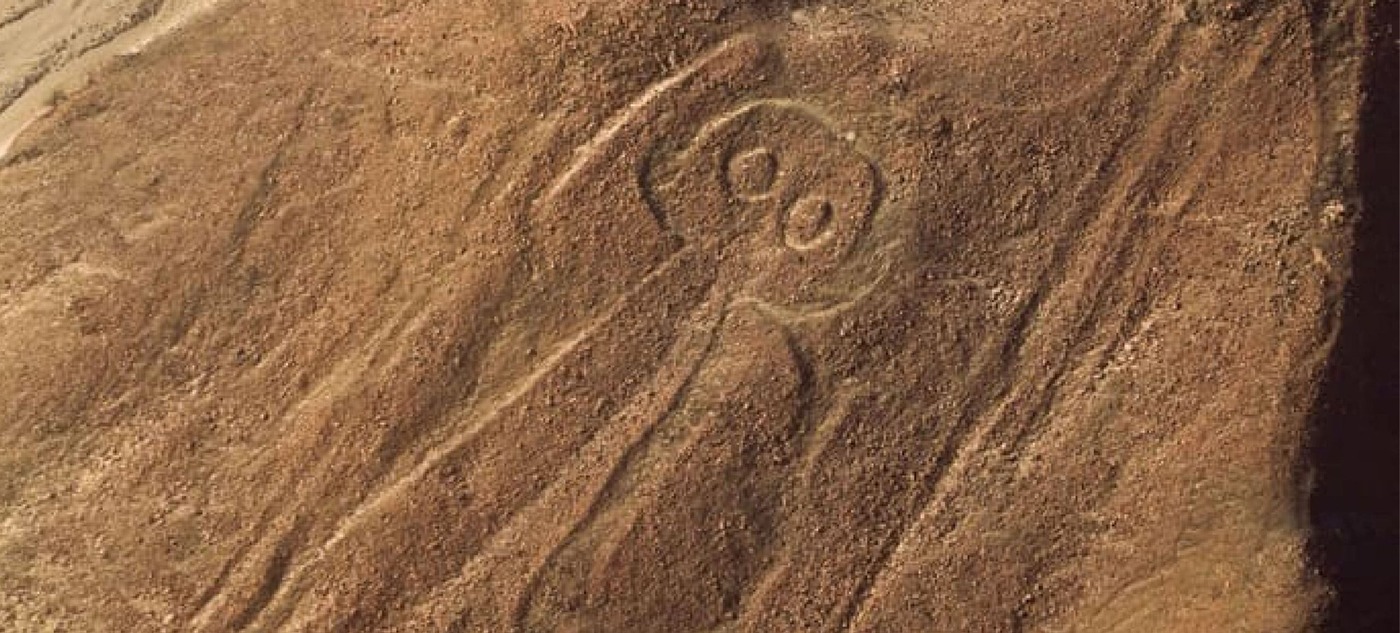
The Monkey
One of the most popular Nazca Lines images, the monkey is quite a bizarre one to have been created here. Given they are endemic to the Amazon Jungle (which is over 500 km away from this desert region), it tells us that the civilisation who created this would have either been avid explorers themselves, or had contact with other tribes during these times.
The Monkey is also another large hieroglyph which is easy to spot, making it a simple Nazca Lines photo to take. It measures a total length of 100m, as well as being roughly 60m wide. It’s a little more difficult to see this design in its fully glory from the ground, which is also the case for a few others when viewing from the observation tower.
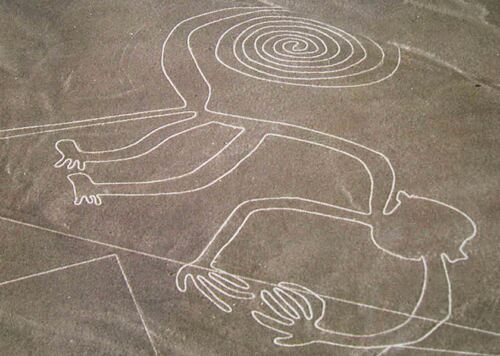
The Spider
Another very distinguished figure, the Spider is one of the other easier-to-spot creations given its simplistic design. Throughout Peru’s history spiders have been well documented, and are found in most regions throughout the country.
This Nazca Lines image measures a total length of 45m, which is still clearly visible from above. The most impressive aspect of this design is just how thin some of these lines are (some of around just 40cm), which help to really bring this design to life.
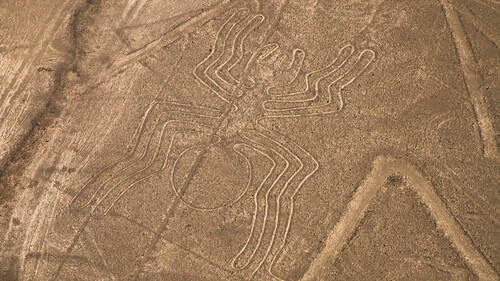
The Dog
Now we have the Dog, which is another Nazca Lines image that is easy to spot from above. Now whilst most dogs have hair, this hieroglyph depicts one that doesn’t – which is common for ancient dogs that are found throughout the desert regions of Peru (and are still found today).
In total the Dog measures some 50m in length, however just like the Spider it’s clearly recognisable given its simplistic design and bold posture.
Are The Nazca Lines Still Visible Today?
Thankfully these hieroglyphs remain in an almost perfect condition, given there is barely any rain or erosion from the surrounding climate. This means we can still take the very best Nazca Lines photos, and see them exactly as they were when they were first created over a thousand years ago.
How To Best See These Nazca Desert Drawings
The only two real ways of spotting the Nazca Lines are by flying overhead and heading to the observation tower.
We highly recommend flying overhead given you will have unmatchable 360° views from above. On our day tour from Lima you will also have all transport to and from the local airport, meaning you won’t have to walk through the desert to see them. You’ll also have a professional pilot explain each design and give you the very best angles possible.
There’s also the option of heading to the observation tower, which is located within the Nazca Desert and close to the hieroglyphs. Whilst it’s cheaper, it can be a hassle to reach since you’ll need to stay in Nazca and make your own way there independently (using a taxi as well as walking). You can still definitely see the ancient hieroglyphs, however the views will nowhere near match those as seen from above.
Overview Of The Nazca Lines Photos
And that’s all for this guide on how to take the very best Nazca Lines photos.
With over 300 different geometric shapes to be explored and learnt about, the Nazca Lines is a must for any traveler who wants to dive deeper into Peru’s ancient history. You can also take some memorable Nazca Lines photos too to show off to friends and family, and especially when flying from above.
Looking to see the Nazca Lines? Take a look at our overflight tour from Lima, where you’ll also visit Huacachina and the Ballestas Islands all within the same day!

